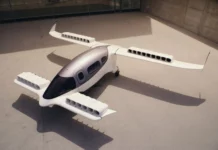Last month, with officials in Washington unable to agree on a budget to avert the stalemate called “sequester,” 149 contract towers across the country were told to shut down. But when lawsuits arose from all corners, the plan was put on hold. Another plan to force all of the nation’s air traffic controllers to cut back their hours produced nationwide backups and howls of dismay that quickly drove Congress to pass a new law in just a week, allowing the FAA to maintain full ATC staffing by raiding the Airport and Airway Trust Fund. The rest of the FAA appears to still be affected, so delays are expected for … everything else. A new budget year starts on September 30, along with the hope that it will, at least temporarily, restore operations to normal.
Boeing’s 787 fleet was grounded in January after the lithium-ion batteries malfunctioned on two airplanes, but late in April the FAA approved a fix and the company was moving quickly to complete the modifications. Fifty of the aircraft are in service. A return to flight status was expected to take several weeks of testing and approvals. The revised systems use new chargers along with new containment and venting measures that are specifically designed to prevent or contain lithium-ion battery fires.
April marks the start of the air show season with Sun ‘n Fun in Lakeland, Fla., and Aero, in Friedrichshafen, Germany, providing the venue for manufacturers from around the world to show off their new products to the aviation world. Several manufacturers at Sun ‘n Fun revealed plans to make it easier for pilots to share ownership of a new aircraft or hire a professional pilot to fly for them. At Aero, attention focused on evolving fuel options for general aviation and a pending major revision to Part 23 that could make it easier to bring new technology to the certified market. The shows also provide an opportunity for the global community of aviators to come together and share their interests, concerns, and just have a good time. Sun ‘n Fun’s airshow, like others around the country, continued without the sequester-grounded military teams.
The 7th annual CAFE Electric Aircraft Symposium was held in Santa Rosa, Calif., late in April, and experts from around the world gathered to discuss new technologies and ideas. Pipistrel’s Tine Tomazic brought news about the company’s plans to expand its electric and hybrid offerings for several of the aircraft in its fleet, to yield better performance, efficiency, and lower costs for operators. “We believe hybrid is the future of flight when it comes to general aviation,” Tomazic said. Experts also offered details on new super-capacitors that could revolutionize energy storage in the near future, super-slick coatings that can decrease drag on aircraft surfaces, and research into noise reduction.
Consumer devices enabling pilots to track their flight via GPS and send their location to the Internet are readily available, but search and rescue still depends on the often unreliable signals from FAA-approved emergency locator transmitters. Officials in Alaska have taken steps to change that, with a test program integrating Spot and Spidertracks with official search-and-rescue. The Enhanced Special Reporting Service has been tested for two years and is now an official option for all pilots flying VFR in Alaska. The program may be expanded to other states in the future, the FAA said.
The Solar Impulse solar-powered electric aircraft flew above the Golden Gate Bridge while preparing for a flight across the U.S. in May … Eclipse Aerospace said it plans to start deliveries of new-production light jets later this year … During Women of Aviation Week, 5,000 women and girls around the world were introduced to flying … AOPA and EAA said their proposal to FAA to ease medical requirements for private pilots has stalled … The Doolittle Raiders met for the last time, to commemorate the 71st anniversary of their 1942 one-way mission to bomb Japan … Breaking news in general aviation can be found at www.avweb.com.




